Updated on January 20, 2025
Warby Parker Virtual Try-On


Vision Center is funded by our readers. We may earn commissions if you purchase something via one of our links.
Key Takeaways
- The Warby Parker App is a great way to shop for new glasses.
- The Virtual Try-On feature gives you a realistic preview of what frames will look like on your face.
- Their Home Try-On Program lets you try five pairs of frames.
- Use the app to save a list of favorites and swipe through them to try them on virtually.
- You can use your vision insurance, FSA, or HSA to pay for prescription eyeglasses, sunglasses, or eye exams.
Warby Parker has established a reputation for offering stylish designs, innovative retail options, and affordable prices. It has also revolutionized how people perceive and obtain eyewear.
Warby Parker designs all of its frames in-house using premium materials such as custom-designed cellulose acetate and ultra-lightweight titanium. It prides itself on being carbon-neutral throughout its operations.
But perhaps Warby Parker's most unique and appealing aspect is its innovative online buying experience. It offers a Virtual Try-On feature and a Home Try-On program, so you can be sure about your choices before making a purchase.
How Does the Virtual Try-On Feature Work?
Warby Parker's app is well-designed and seamless, but its highlight is its Virtual Try-On feature. This feature allows you to swipe down on any frame to instantly try virtual frames.
This can help you find frames that suit your facial features. You can also use it to try on frames from your favorites list and compare them side by side.
Because Warby Parker offers a wide selection of frames, this feature can be valuable in helping you choose the perfect frames.
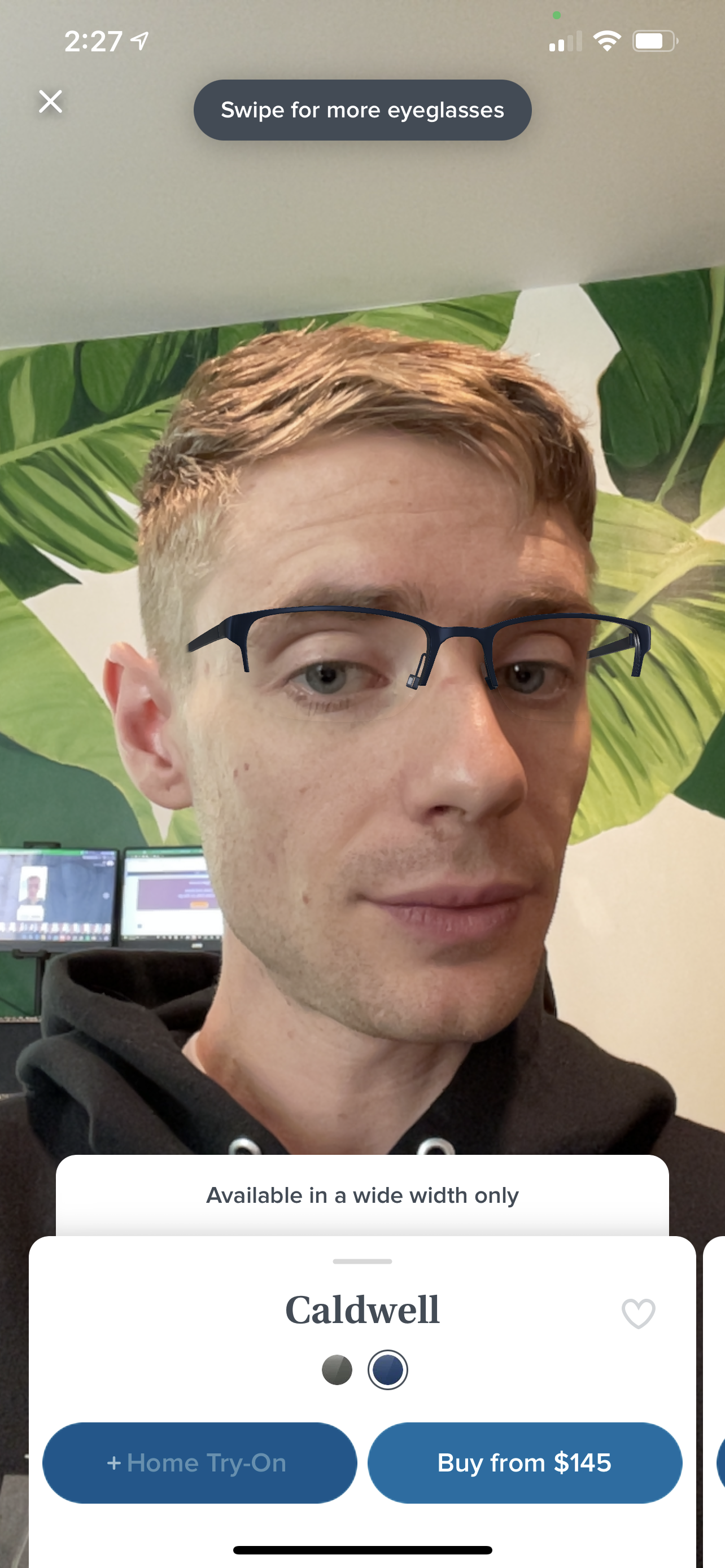

What is The Home Try-On Program?
The Home Try-On Program is one of the pillars of Warby Parker’s success. It's what differentiates them from many other online eyewear retailers.
You can select up to five frames and have them shipped to your house for free. You’ll have five days to try on the frames to see how they look, fit, and feel.
Once you’ve tried all the frames, you can immediately mark which pair(s) you want to keep or order them online. You will have to ship the frames back to them so they can add your prescription to your order.
How Much Does the Shipping for Home Try-On Program Cost?
The Home Try-On Program offers free shipping both ways, even if you decide not to buy any of the frames. However, not all frames are available for the Home Try-On Program.
You can flip a switch while browsing to add a filter that makes all the frames you’re looking at available for Home Try-On.

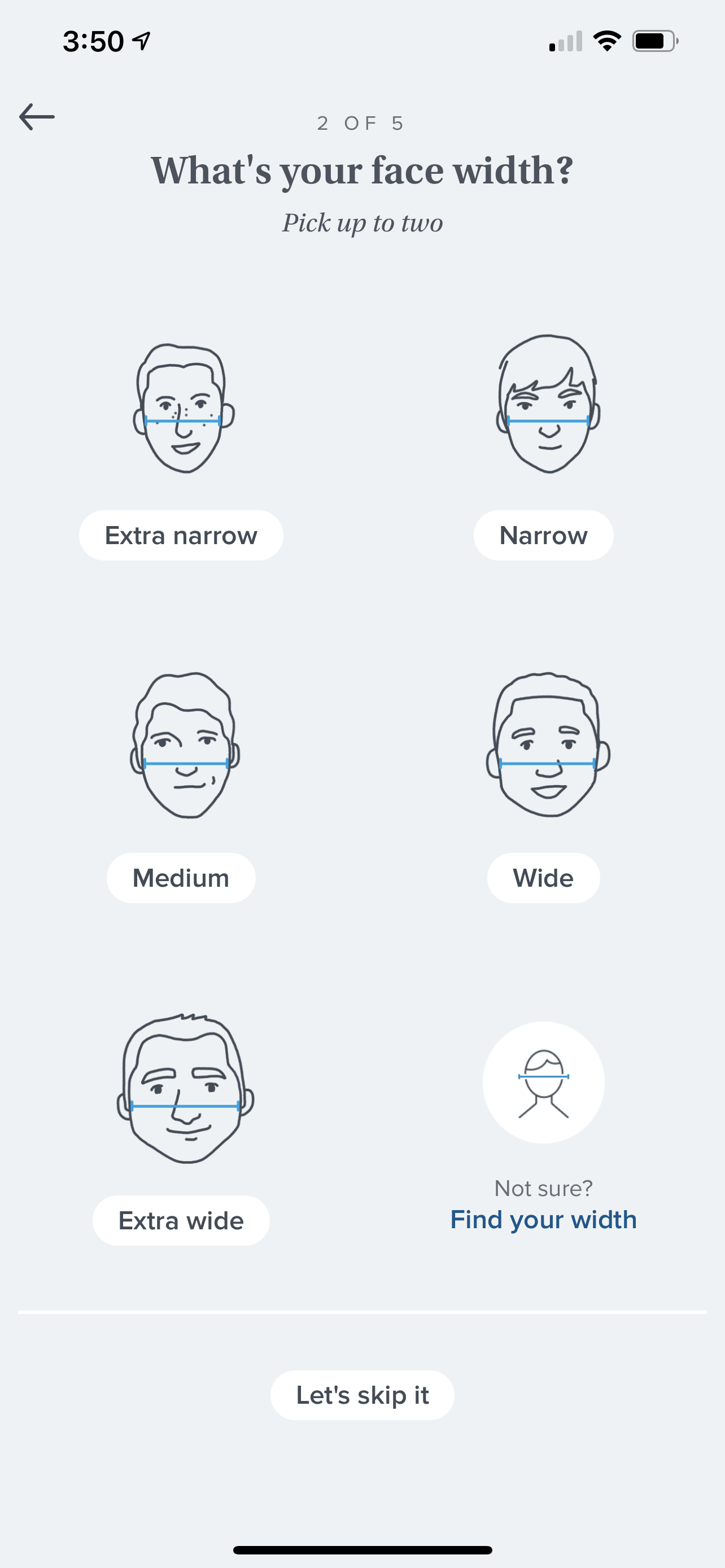

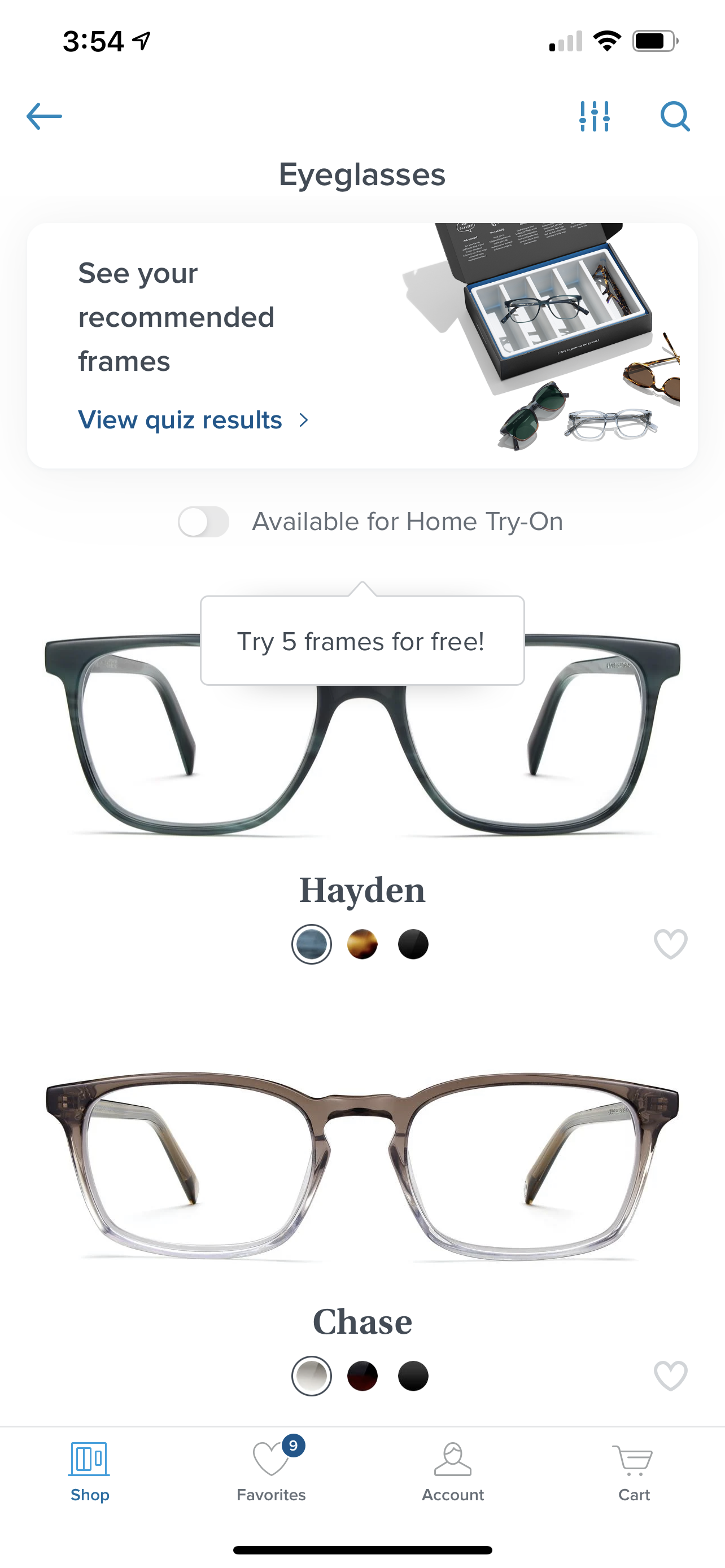
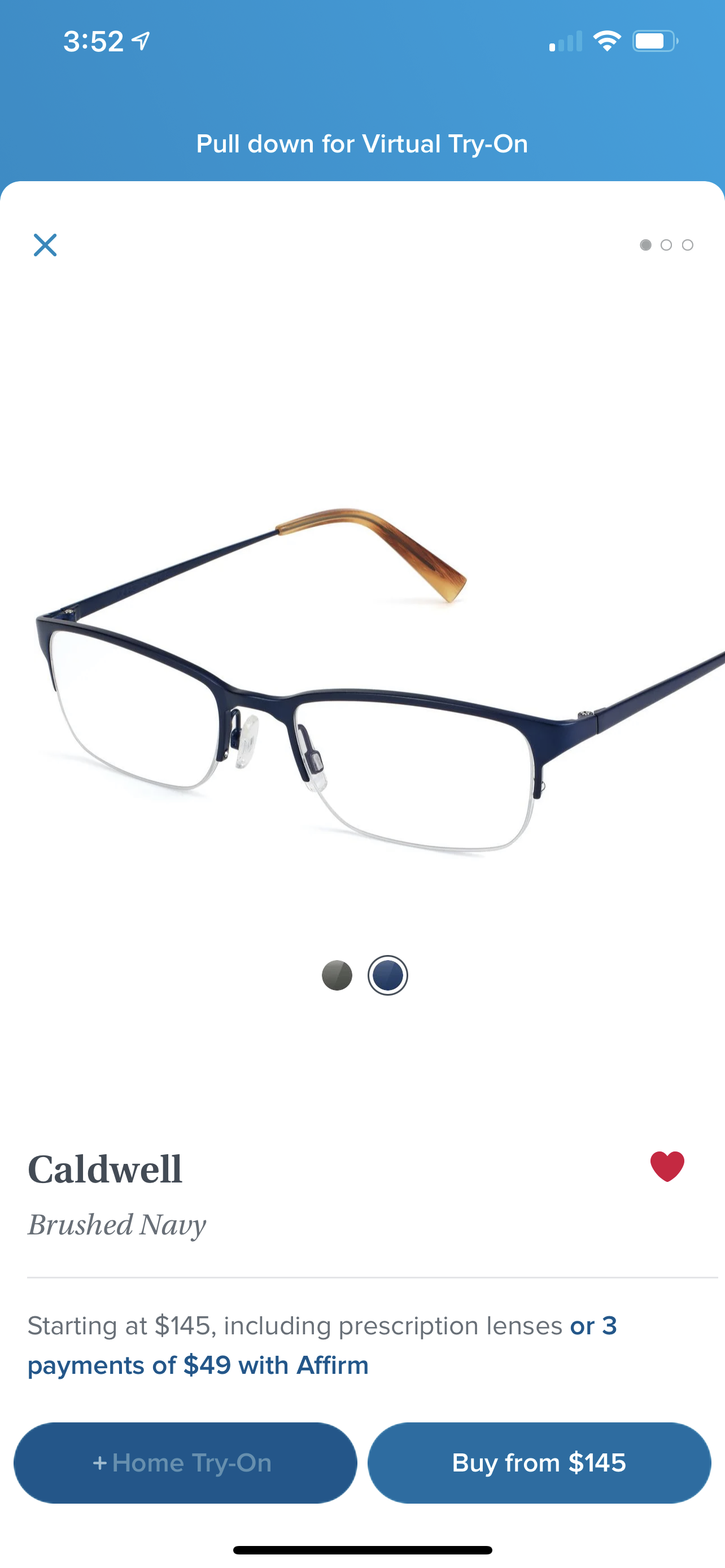
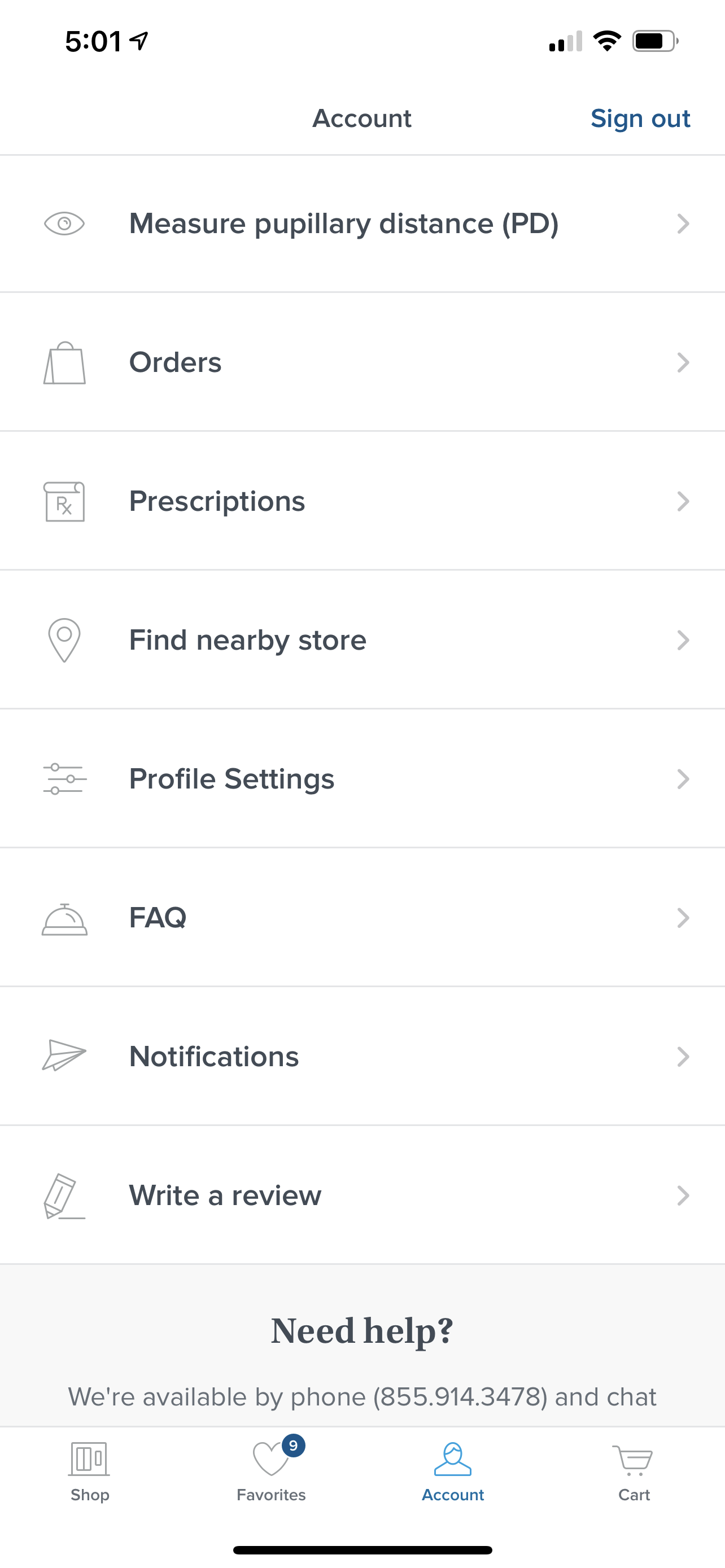
How to Order On the App?
Ordering a pair of glasses from Warby Parker is simple on both the app and the website. Here’s how:
- Upload your prescription to the app or website.
- Select the frames you want to buy.
- Order with the Virtual Try-On tool or the Home Try-On Program.
Warby Parker usually takes a few days to process your order, and the whole process typically takes 10 to 15 days. If you don’t have a prescription for your glasses, you can schedule an eye exam at Warby Parker or your local eye doctor.
Can You Use Vision Insurance to Pay For Warby Parker Glasses?
Yes, you can use your vision insurance, FSA, or HSA to pay for Warby Parker Glasses. You can also use them to pay for sunglasses and eye exams. Learn more about Warby Parker and insurance.
Is the Mobile App Good?
The Warby Parker Mobile App has a 4.9 rating with over 265K customer ratings on the App Store. It’s well-designed in terms of aesthetics and user experience.
The app has several useful features that help you browse its collection of frames. We recommend starting with their frames quiz because it can show you a collection of frames based on your answers.
Clicking on the heart icon adds frames to your favorites, which stores all your choices in one place. Unfortunately, the app is only available for iOS, making it inaccessible to Android users.
Customer Reviews




In this article
3 sources cited
Updated on January 20, 2025
Updated on January 20, 2025
About Our Contributors
Michael, a lead content writer for Vision Center, brings eight years of experience in medical copywriting and advanced research methodologies. With a B.A. in English and Linguistics from the University at Buffalo, he specializes in creating detailed, evidence-based content, particularly in the field of eye health, to educate readers and guide them toward appropriate treatments.
Dr. Melody Huang is an optometrist and freelance health writer with a passion for educating people about eye health. With her unique blend of clinical expertise and writing skills, Dr. Huang seeks to guide individuals towards healthier and happier lives. Her interests extend to Eastern medicine and integrative healthcare approaches. Outside of work, she enjoys exploring new skincare products, experimenting with food recipes, and spending time with her adopted cats.

